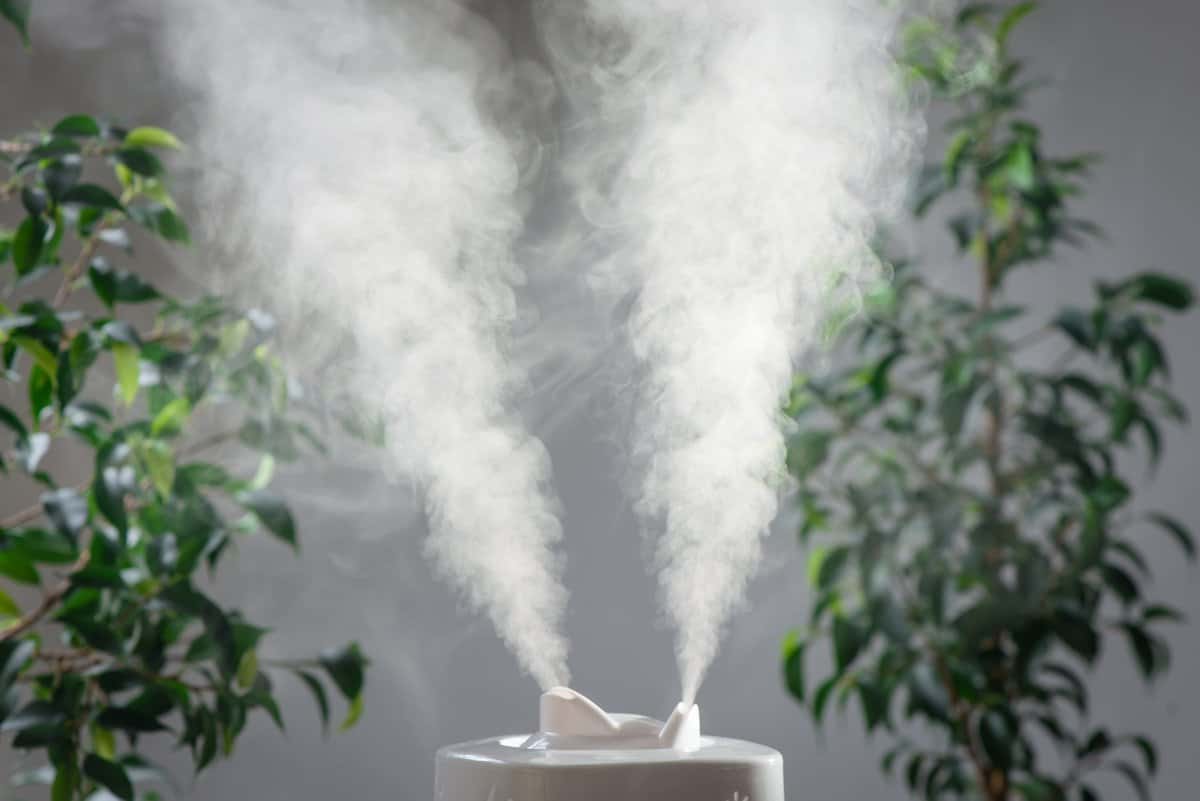I have had asthma ever since I was young, and so I was really keen to investigate this topic. Do humidifiers help with asthma? Are the symptoms of asthma and risk of infection lower with an optimal humidity? Should you use one? This article will answer all your questions about humidifiers and asthma.
Most people are familiar with the definition of asthma and what it means to have it. Asthma is a respiratory condition that causes episodes of wheezing, chest tightness, shortness of breath, and coughing. It is typically treated with bronchodilators, corticosteroids, leukotriene inhibitors and inhaled beta-agonists and anti-cholinergic agents. These medications work by relaxing the muscles in the airways and reducing inflammation in the airways, allowing them to open up. It is one of the most common chronic lung diseases in children and adults. It is estimated that 10 million people in US have asthma.
The main symptom is airflow obstruction that triggers coughing and wheezing. Other symptoms may include increased mucus production, shortness of breath, and chest tightness. It can be quite frightening when bad.
Removing particles from the air can help asthmatics, but what about adding water vapour to the indoor air? A humidifier is a device that adds water vapor to the air in order to control its humidity. They are often used for comfort, but they can also have some health benefits for people who suffer from asthma. Some people believe that humidifiers help with asthma symptoms, while others disagree. In this blog post I will discuss how humidifiers might be helpful in the treatment of asthma and why you should consider purchasing one if you have been diagnosed with this condition.
As a whole dry air increases airway resistance in asthmatics-it is best to aim for a relative humidity of 30-50%. Optimal humidity also leads to less severe respiratory infections.
Air temperature affects humidity markedly, the water carrying capacity of cold air is much lower than warm air. So humidity tends to be low in the winter and higher in the Summer. To complicate matters, temperature also affects the airways and can make them contract in asthmatics. Consequently the 2 factors need separating out and the clinical studies do this by using air at the same temperature with different humidities and air at different temperatures with the same humidity.
So let’s turn to how humidity affects the airways and how a certain range of humidity is best.
How Does a Humidifier Help With Asthma?
Reduction of Symptoms
a) Direct Mechanisms
There is direct evidence that humidity affects airways resistance. Strauss et al investigated the influence of heat and humidity on airway obstruction induced by exercise in asthma. Their results are shown in the following table. As you can see high humidity air reduced the amount of airway obstruction both with air at room temperature and at body temperature.
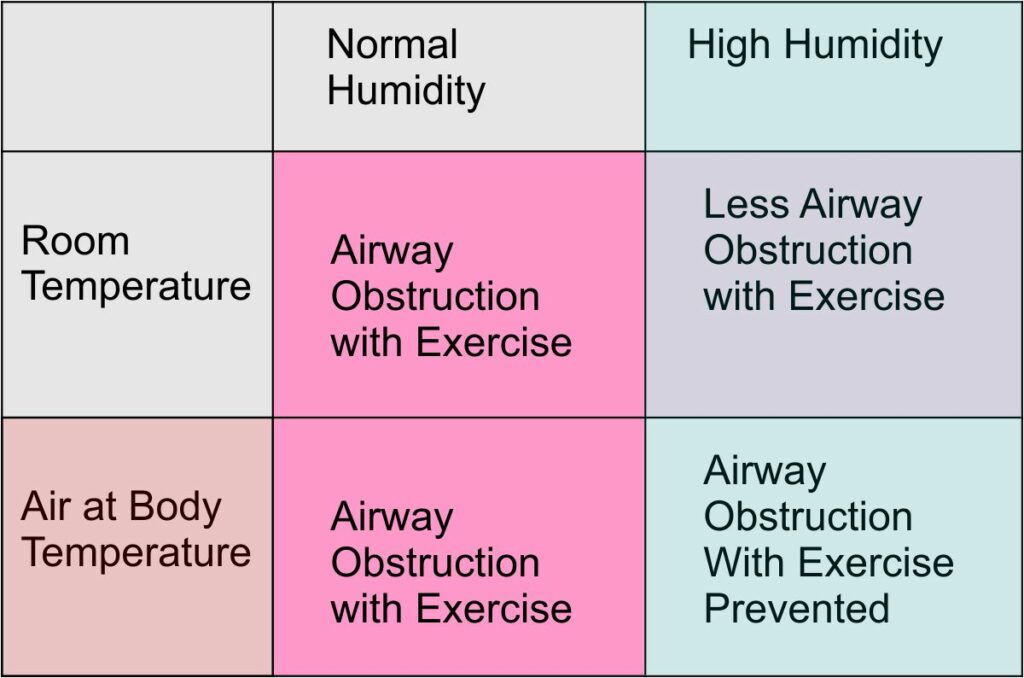
Another study found the same. An additional study also found that if the air was hot humidity prevented the increased difficulty breathing in asthmatics when they exercised. There was no effect of humidity on the exercise-induced difficulty breathing if the air was cold.
So a degree of humidity can be helpful for asthmatics when exercising what happens during normal activities?
In an experiment in which asthmatics breathed in air of different humidities at the same temperature through a mouthpiece as part of the experiment. The subjects were at rest. Airway resistance increased with increasing water content. So at rest increasing humidity led to increased difficulty breathing in asthmatics.
What about air at the other end of the spectrum-is dry air and its effect on asthma? Several studies have found an increase in airways resistance in response to dryer. In one study children were got to hyperventilate by being linked up to a mouthpiece and the more they blew the higher a balloon on the screen went. This showed a smaller increase than cold air induces, but nevertheless an increase in airways resistance.
An increase in airways resistance in response to dry air has also been seen in adults. In one study, breathing dry air induced a 16% fall in the amount of air that could be blown out in one second in a group of adult asthmatics.
So it seems both dry air and very humid air can lead to an increase in airway resistance when an asthmatic person is at rest of going about their normal activities. Mildly humid air may be an advantage when they’re exercising.
b) Reduction of Infection
If the humidity of the air is too low, humidifying the air can protect us against respiratory infections. One of our defence mechanisms, mucociliary clearance of our airways, relies on mucus in our airways trapping particles, bacteria and viruses and being continuously moved up and out of our lungs. If the air is too dry, the mucus becomes stickier and more difficult to move. So at very low humidities when this mechanism is impaired viral respiratory infections such as influenza can be more severe.
In one study mice at low relative humidity (10-20%), developed much more severe influenza. This found that other defence mechanisms in the lungs were also impaired-
- Mucociliary clearance, so the virus was not cleared from the airways as well
- Innate antiviral defence
- Tissue repair function
What is the Best Type of Humidifier For Asthmatics
A humidifier for an asthma sufferer should only disperse water into the air by evaporation. You may think that all humidifiers use evaporation to get water into the air. However, this is not the case – please see the diagram below and this article for further details.
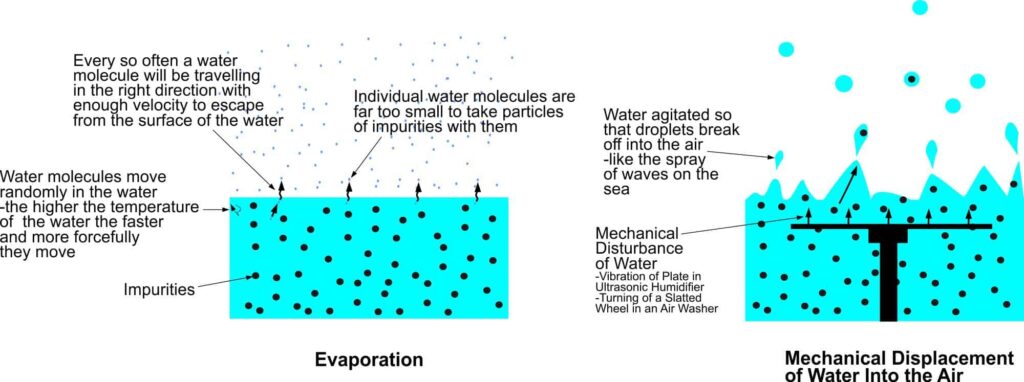
If using a portable humidifier, asthmatics should not use an ultrasonic humidifier or cool mist humidifier. This is because these humidifiers can transmit water droplets directly into the atmosphere (righthand side of diagram). The same also applies to an impeller humidifier. Also in the room temperature water of these humidifiers, bacteria and fungi can grow. If these humidifiers have bacteria and fungi growing in the water, these will be breathed in by the asthmatic person and potentially irritate or even infect the airways. So a dirty humidifier is a potential threat to an asthmatic.
Both a warm mist humidifier and an evaporative humidifier use evaporation alone to get moisture into the air (lefthand side of diagram).
Other impurities in the water in the humidifier can also be a problem. Using distilled water in the humidifier can lessen this risk, but it is safest to use a warm mist humidifier or an evaporative humidifier.
So in general the best type of humidifier for an asthmatic is a warm mist humidifier. However, if you have children or pets, then to avoid injury to them from steam or boiling water, it would be best to opt for an evaporative humidifier.
The advantage of a warm mist/steam humidifier is that the heating of the water stops the growth of bacteria and fungi.
Another option of course is a central humidifier using the HVAC system to humidify air throughout the house. This may well be your best choice-I have done an extensive review in this article.
Humidifiers do not reduce indoor air pollutants so they do not improve indoor air quality in this sense. They simply add moisture to the air.
How to Use a Humidifier if You Have Asthma
It is probably best to aim for a humidity in the middle of the recommended range 30-50% ie 40% relative humidity.
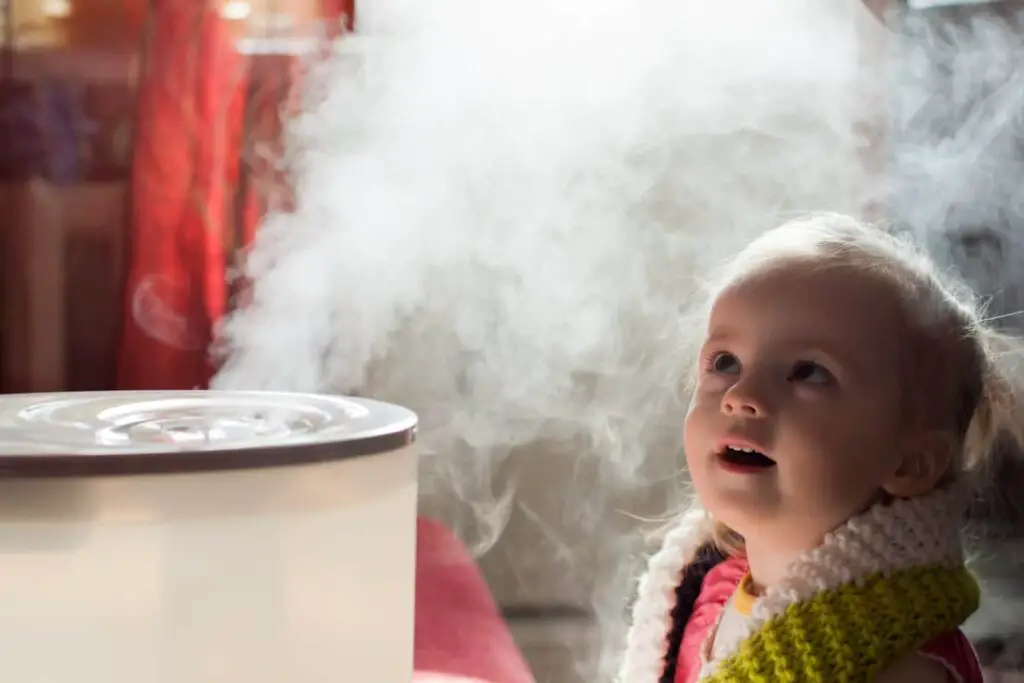
When Not to Use a Humidifier
Not when the humidity is greater than 50%. Above this humidity level house dust mite can survive and multiply. At much higher levels, fungi/mold can grow in the room. Both of these if breathed in can irritate the airways.
When to Use Humidifier?
When the humidity in the room is lower than 30% relative humidity.
When Not to Use a Humidifier?
Not when the humidity is greater than 50%. Above this level house dust mite can survive and multiply. At much higher levels, fungi/mold can grow in the room. Both of these if breathed in can irritate the airways.
What else should an asthma patient consider?
Here are a few things that every asthmatic should consider –
- Take medication as prescribed without fail – this seems obvious but can be a problem. Asthmatics need to have spare supplies of in date medication available at all times.
- Seek medical attention early if you feel your asthma is deteriorating or if you have a chest infection.
- Have a robotic vacuum cleaner with a HEPA filter as mentioned above. This means it is possible to keep your home on a whole new level of being free of dust.
- Have a P100 (or if not a FFP3) specification elastomeric mask available at all times. Then if atmospheric pollution rises, only one in 10,000 particles in the air will actually be able to reach the airways in your lungs. The mask is also useful for doing any cleaning or DIY which will create particles. The elastomeric material gives the most comfortable and effective seal with the face. Filters which will remove chemicals as well can also be brought but at least consider a simple particle filtering mask with a high specification.
- Consider a medical grade air purifier-see the recommended ones in this post. Ideally buy 2 of the most expensive option, one for a day room and one for your bedroom. Most of all get an air quality monitor and aim for an AQ score of 0 or a reduction in particle count of at least 80%. The majority of people using air purifiers do not use them properly and so get really no benefit from them though poor choice of machine or almost universal poor technique. Poor technique in the use of air purifiers is seen even in medical trials when people are given machines. Usually the trial participants do not even get a 50% reduction in particle count. For further details on the health effects of airborne particles in asthma, please see this article.
- Consider a car air purifier.
- Consider cleaning out your HVAC ducts.
- Install UV lights in HVAC system to irradiate cooling coils. This will prevent fungi/mold growing on the cooling coils if water condenses on them.
- Have less carpet and fewer heavy curtains
- House dust mite allergen impermeable mattress covers. Using house dust mite allergen–impermeable bed encasings/mattress covers reduced emergency hospital attendance with asthma in children.
This list is not necessarily a comprehensive but hopefully contains some helpful things that you are not already doing.
So do humidifiers help with asthma?
Yes they do, for an asthmatic it is important not to have air that is either too dry or too humid. Clinical studies show that either extreme of humidity will cause airways to narrow. Also, a basic level of humidity leads to less severe infections of the airways. Asthmatics should aim for a range of humidity that EPA recommend i.e. 30 to 50% relative humidity. Any asthmatic would benefit from having a humidity meter, a hygrometer. Although they start at about $12 you should pay more for one that you can be sure is accurate.
At least weekly checks of humidity levels in the home would seem to be wise. Humidity should also be checked after a significant change in temperature, as humidity is very temperature dependent. In summer, the humidity is often high and in the winter the humidity is low.
Related Questions
Related Articles
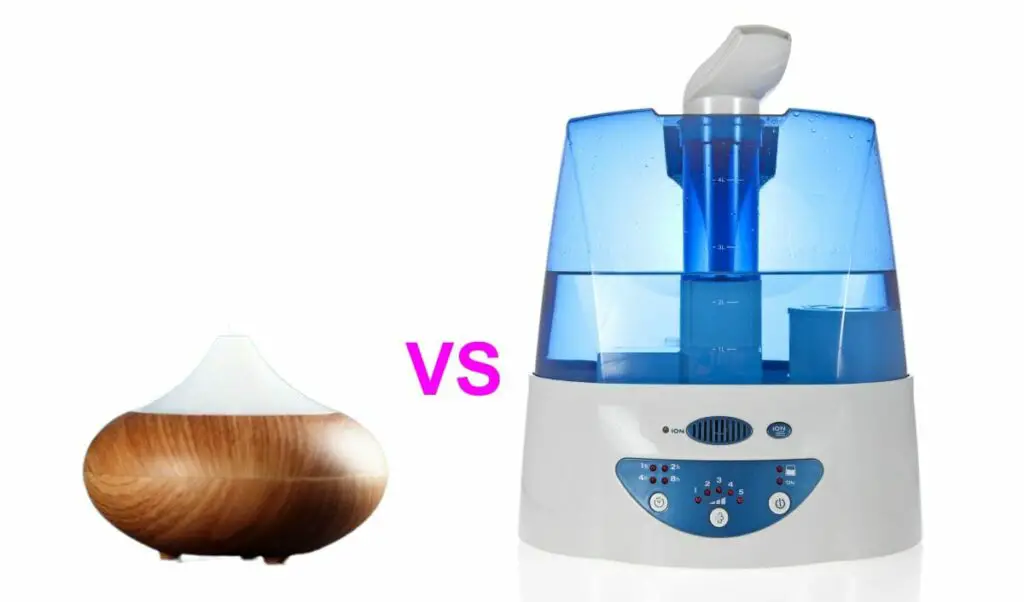
The Difference Between an Air Purifier and a Humidifier-13 Important Health Effects
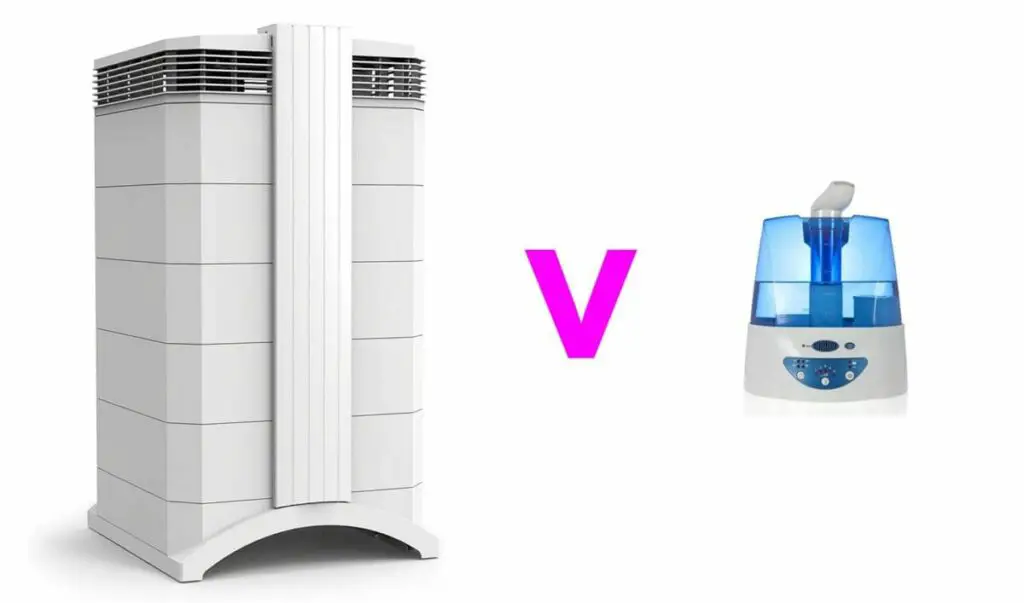
Using an Air Purifier and Humidifier Together-Hidden but Rare Problems


